Few provincial gunmakers were as singular as Thomas Horsley of York and fewer still were interesting enough to become the subject of an entire book by Britain’s foremost living authority on the patents and mechanisms of the victorian shotgun, David J. Baker.
Baker’s book ‘Thomas Horsley, Gunmaker of York’ is an informative and fascinating insight into the life and work of a man developing his business during the most fruitful time for sporting gun designers through which anyone has lived.
To gun collectors, the classic Horsley is a hammer gun of the 1860s, featuring three of Horsley’s own patents. The guns are distinctive and recognisable from ten yards away.They are quite unlike anything sold in Birmingham or London at the time.
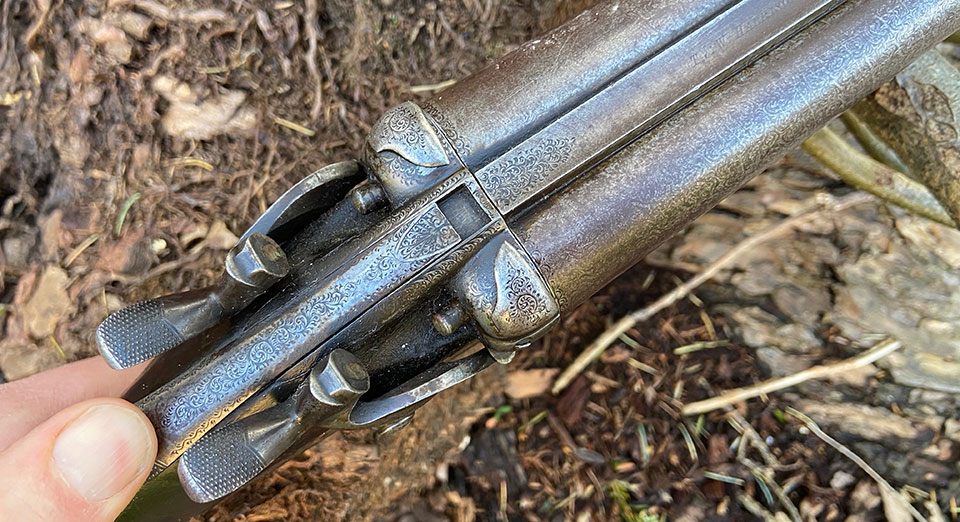
The first of the patents in question is the ‘top-slide’, or ‘No.2’ patent. This is pulled-back by the operator’s thumb and typically operates a rounded section, sliding-bolt, which emerges from the bar and engages with a bite in the rear lump. Patented in October 1863 and first made as a pin-fire, Horsley was soon building centre-fire guns around the patent. Baker reckons there to be about a thousand of these produced over, perhaps, eleven years.
The second of the patents is No.1138 of 1867, protecting Horsley’s retracting firing pins. Early ones were horizontal levers, operated by flanges on the hammers, when pulled back to ‘cock’. Later variants had almost horizontally oriented levers.
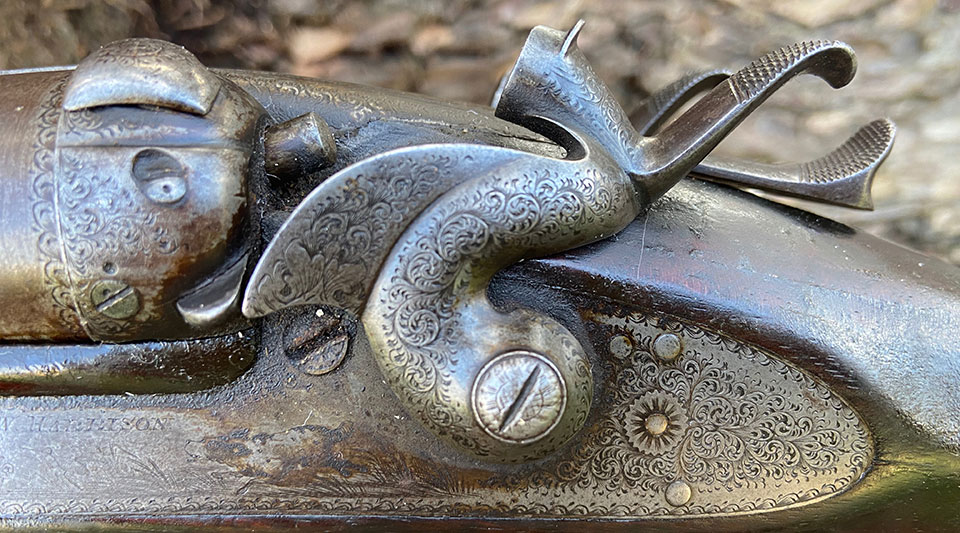
The purpose of these retracting pins was to solve the problem of fired pins sticking in soft copper caps in early centre-fire cartridges (centre fire was introduced in 1861 and was still quite a novelty), though it caught-on quickly.
The final of the three patents relates to ‘Loaded’ indicators on the tops of the fences. The mechanism (Patent 710 of 1868) involves a slim, protruding bar in the action face which is pushed back by the head of an inserted cartridge and a spring-loaded internal lever then slides-back a cover plate on the fence, revealing the gold inlaid letters ‘LOADED’. When no cartridge is present, the words remain covered. This early safety device warning of a loaded gun may have been useful but few are seen later than the 1870s, so they were not popular enough with sportsmen to become widely adopted.
This early safety device warning of a loaded gun may have been useful...
The gun in the photographs here has all those classic Horsley features. However, it isn’t a Horsley. The lock plates carry the name ’T&W Harrison’, as does the rib, with the addition of the location: ‘Carlisle’.
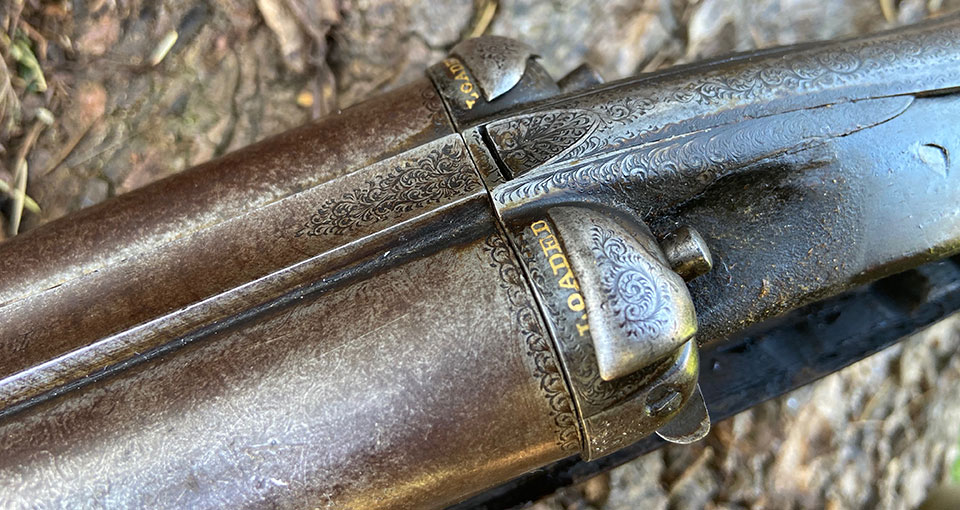
The gun is a 12-bore with bar-locks, fully encased in the wood-bar style abandoned by Horsley from his serial number 2050 and above. Horsley was still making ‘floating lock’ guns of this type after the later ‘decked bar’ style was introduced and the serial number 1999 corresponds with the style of gun Horsley was making, so it is reasonable to suppose it is a Horsley serial number we see on this Harrison gun.
Horsley’s gun number 1991 was made in 1872 and 2082 was the first of 1873, so if this is a Horsley made gun, 1872 would seem to be the manufacture date.
So what was T&W Harrison? The firm began, in 1810, as ‘Launcelot Harrison’, later, unusually, adding a woman’s name to the style ‘Launcelot & Ann Harrison’ . The T&W of the name on the lockplate would be Thomas and William Harrison, who traded in Carlisle, at three addresses, from 1847 to 1894.
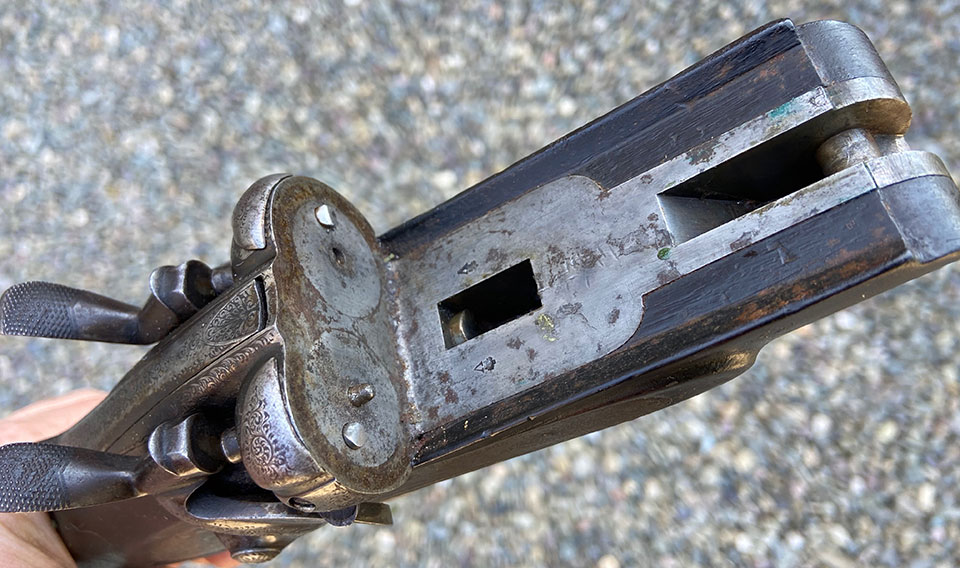
Though the Damascus barrels don’t provide an address, the proof marks are of some help, being the 1868 London proof for black powder.The barrel maker’s stamp is ‘JS’.
Unfortunately, the gun came to me out-of-proof and has been cut for sleeving ,as per legal requirements, which is a shame as they are thick and the visible pitting may well have cleaned out. We shall never know!
I bought it principally because it is unusual and interesting. I enjoy seeing guns of this period that stylistically look like something obvious but bear a name that has no apparent connection to the mechanism. I had a Jackson of Nottingham gun a few years ago. It was quite obviously a Greener Facile Princeps and quite an early one at that. Greener was not thought to have made these for other firms but somehow this had escaped the factory and been finished elsewhere and badged with the name of a little known provincial maker.
Guns like this give us some clues about the levels of co-operation between rivals in the gun trade in the mid-19th century...
Guns like this give us some clues about the levels of co-operation between rivals in the gun trade in the mid-19th century, or perhaps , in some cases the links maintained with the factory by former workers who left and set up on their own in the provinces. Perhaps some of these actions left through the back door and were evidence of a bit of ‘freelancing’ by gunmakers looking to make a little extra income. This is, of course, idle speculation. We can’t know for sure.
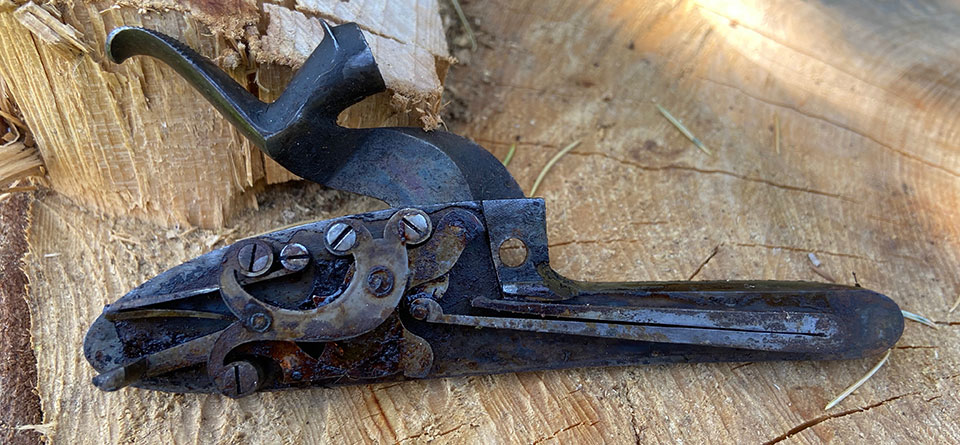
I do not recall seeing any other Horsley patent guns with another maker’s name on them. Another interesting observation is that, while most Horsley centre-fire hammer guns do not have dogs engraved on them, many of his percussion guns featured a spaniel flushing game, very similar to the engraving on this Harrison gun.
Specifications:
T&W Harrison
Bar-in-wood hammer gun
12-bore
30” Damascus barrels
London Black Powder Proof (1868 Rules)
Horsley patent single-bite, top-slide action (1862)
Horsley patent ‘Loaded’ indicators (1868)
Horsley patent retracting strikers (1867)
Published by Vintage Guns Ltd on




